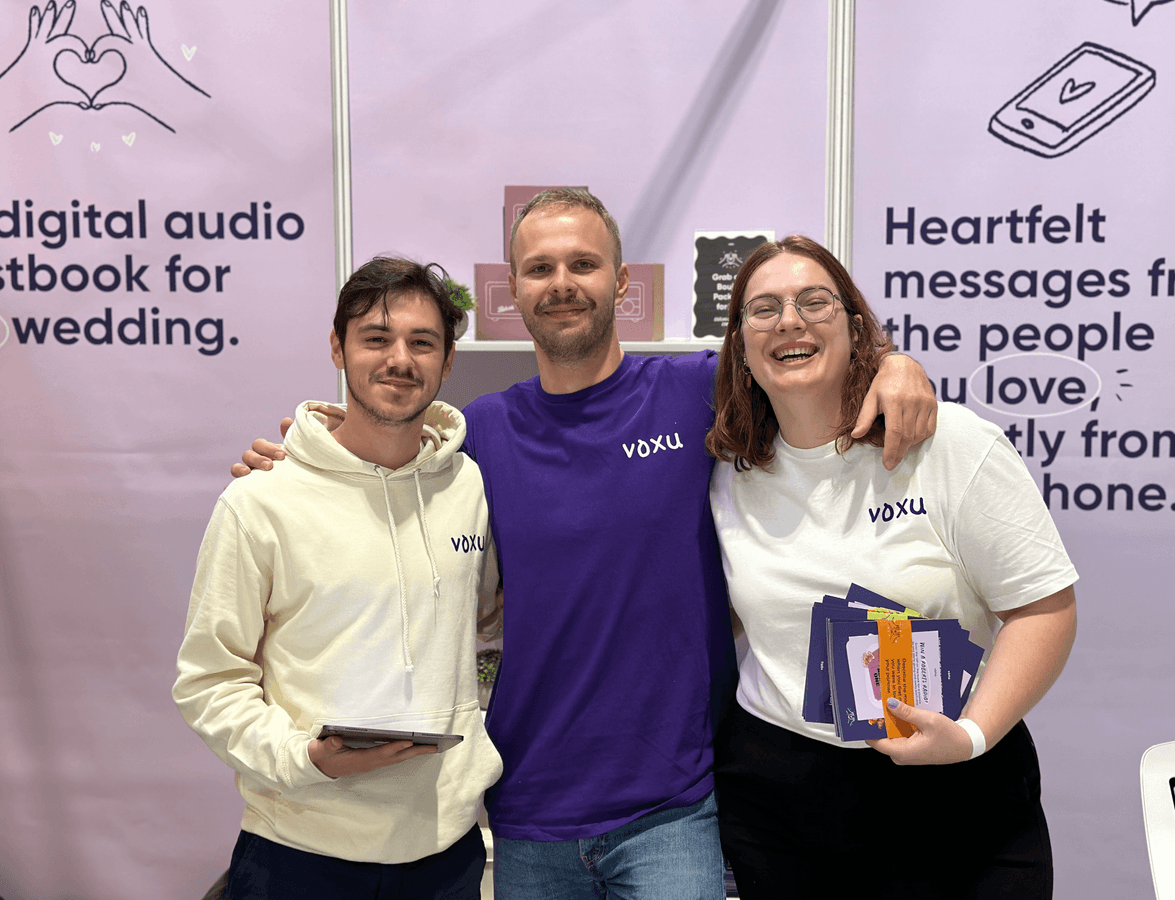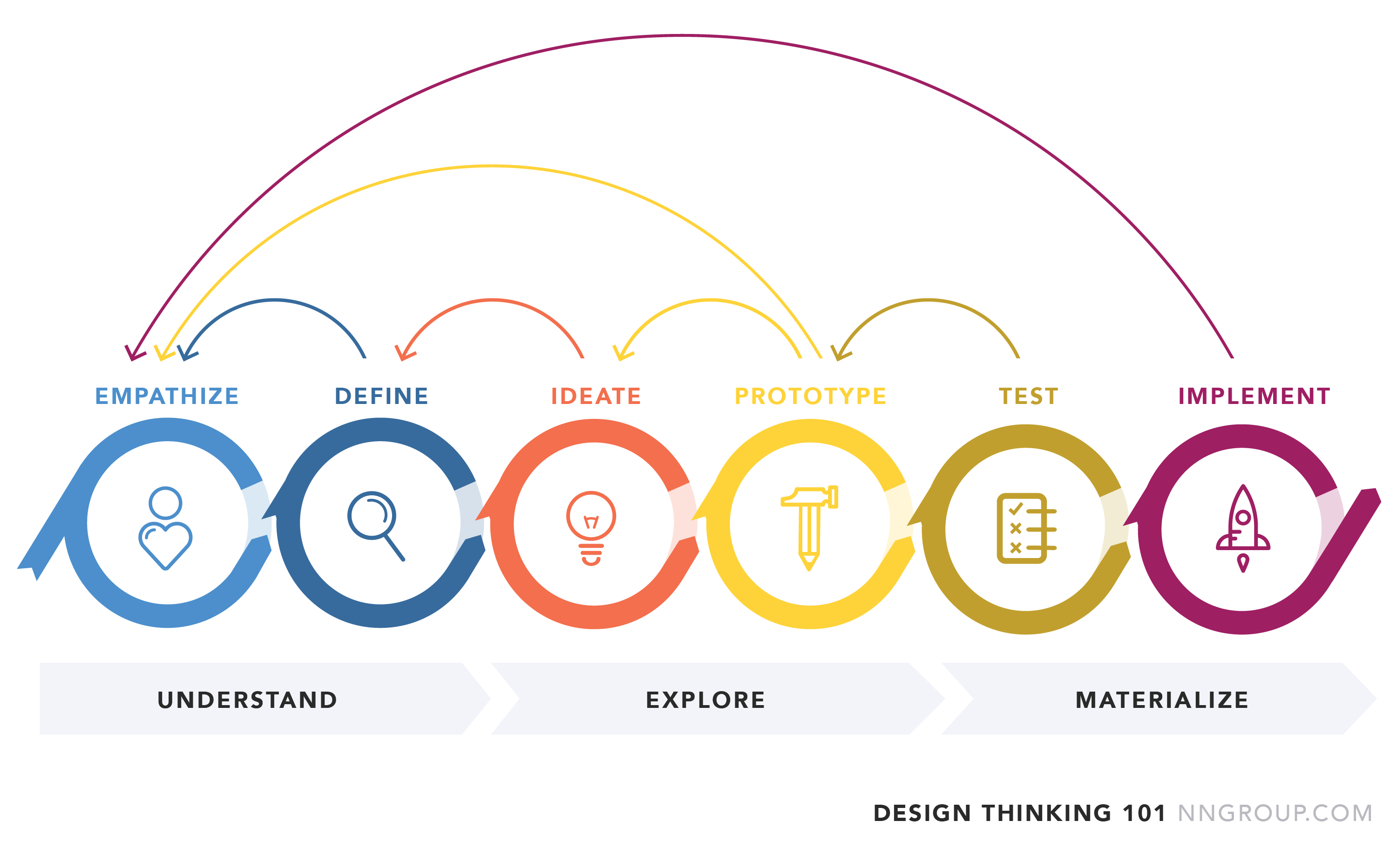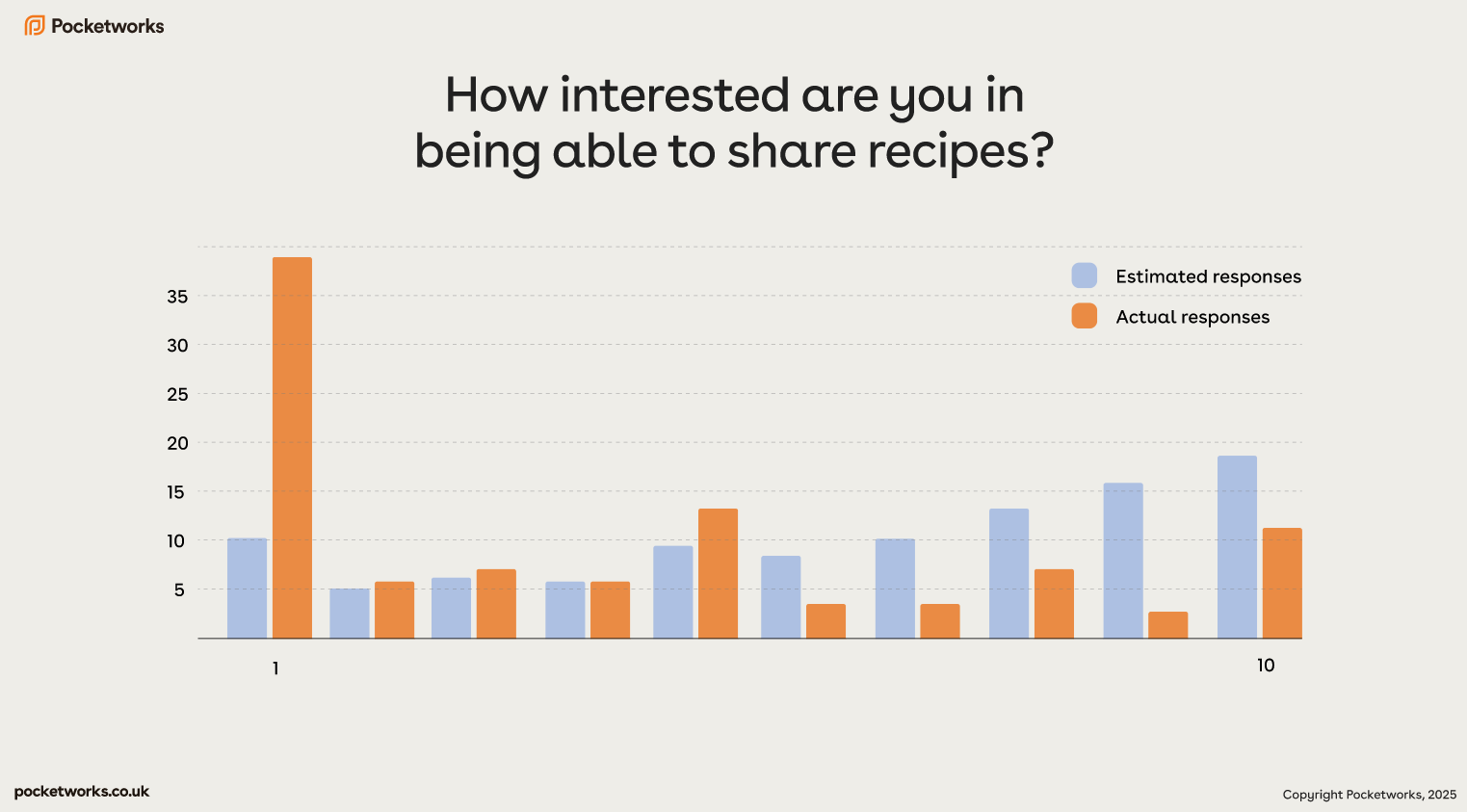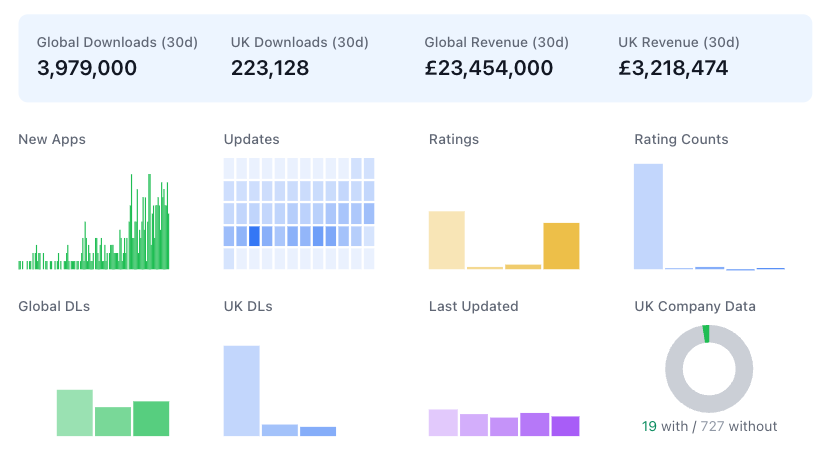People have ideas all the time, but often struggle to make a strong business case for building them. So they don't get funded. And they don't get built.
Vibe coding makes it much easier to build ideas quickly, giving companies a chance to try new ideas at a low cost. That's good news for innovative business leaders and teams.
In this article, I'll make a case for why you should consider unlocking that R&D budget and building some of those ideas, all in the spirit of innovation.
There's a bit of confusion about what vibe coding actually is, so here's a recap.
What is vibe coding?
Basically, think of it like this. You have people using ChatGPT or some other tool to write code without even looking at it. The term was coined in 2025 by Andrej Karpathy, the cofounder of OpenAI. He described it in slightly more colourful way.
"fully giving in to the vibes, embracing exponentials, and forgetting that the code even exists".
Andrej Karpathy, the cofounder of OpenAI
The big thing here is that developers aren't paying a lot of attention to code quality, standards or maintainability. They're trusting the LLM to do it's thing.
So why is vibe coding making things so fast? Here’s my own experience on that.
Why vibe codings speeds up innovation
As a software developer, I've always built my own ideas. But there are also many I haven't built because they all take time. LLMs have changed all that.
For developers, an LLM is like your iPhone's iMessage autocomplete on steroids. But rather than completing sentences badly, it completes apps rather well. You can literally spit out new app ideas in minutes. And I'm not talking about simple business systems and data collection apps.
You can actually explore new, unusual or disruptive ideas quickly.
But should these things be built? Just because we can, does it mean we should?
Just because you can
AI is making the business case for "might be good" ideas much cheapre to execute. Unless you've got zero R&D budget, I’d argue that you should have a crack at those ideas you've got on the back burner.
After all, some of the best examples of innovation are bad ideas that become amazing products, truly helping humanity. The pacemaker has saved countless lives and came about accidentally. Wilson Greatbatch was actually trying to develop a device to measure the heart rhythm, not regulate it.
Jack Dorsey launched YouTube as a dating site, but then changed its purpose because nobody was willing to upload dating videos. Now it makes billions.
There are countless stories where people try to do something, and end up doing something better. It’s the trying the counts, and that’s why ideas need to be attempted.
Historically, Pocketworks has backed this view with action, not just words. In 2023, we introduced a Cofounders Scheme, establishing an annual £50,000 fund to support new ideas generated by employees within the company. It also allows them to draw on the broad skills of their peers across the company, enabling them to design, develop, market, and grow their ideas.
Here's the amazing team behind one of these ventures - Voxu.

As you may know, innovation isn't building ideas and letting them fester in the lab. You must actually effect change to be innovative. So a prerequisite for innovation is throwing ideas out into the world to see how people react.
That’s why vibe coding is great news for innovation.
Here’s a personal example.
An example of a vibe coded app, in just 24 hours
For a few years, I've been rethinking the good old calendar app. It's because calendars confuse the hell out of me; I frequently miss meetings or schedule them on the wrong day. Or I feel overwhelmed by too much stuff on my calendar, especially when my social life gets busy alongside work life.
This situation isn't ideal for a Managing Director whose work life is mainly about meeting people. So I've had a few goes at fixing it over the years. And I've never quite got there.
However, I recently vibe-coded a calendar app. I reckon it’s taken about 8 hours of work.
The goal was to display information in a new way so I can quickly make sense of how busy I am and what’s coming up.

Not your typical calendar app.
There's been a fair bit of output for not a lot of time, as this app:
- Syncs with any Google or Outlook calendar
- Presents events in “tracks” like a waveform, showing how busy. This will immediately be familiar to any musicians or electronics buffs.
- Shows all-day events in a separate track
- Shows working location in a separate track
- Single person events are shorter, multi person events are bigger - so it’s clear when I’m meeting lots of people
- Summarises booked time in the week
- Summarises how many internal vs external people I’m meeting with
- Automatically filters events into tracks by name
- Allows full customisation of those tracks (Sales, Marketing, Operations etc)
- Allows daily, weekly, monthly and quarterly view
- Caches data offline for speed, and auto-refreshes periodically
- Is both a MacOS app and a browser app
As you can imagine, it’s not a trivial piece of work.
Earlier I guessed all that only took 8 hours. I may have lied. To verify, I used a tool to analyse my code and it said:
User "tobinharris" committed 45 times between 27/10/2025 and 11/11/2025 and spent ca. 1:0:33:40 (DD:HH:MM:SS) in 10 sessions on this repository. With an hourly wage of $70 this would cost $1750.
So, over 16 days I’ve invested 24 hours exactly. That’s still pretty good going. In the world before AI-powered developer tools such as Windsurf and Cursor, this would have taken more like 80 hours.
So, LLMs are enabling us to try new digital ideas fast and at low cost. Does this change the overall process for building successful digital products? Does AI-accelerated development mean we approach product innovation differently?
A different process for innovation?
Yes, I'm encouraging you to build those back-burner ideas, but I'd encourage you to stick to a rigorous process.
Do we need a different process now that AI is sitting at the table?
I don’t think so. LLMs and vibe coding accellerate the process, but they don't replace robust processes.
Innovation is an iterative process. If you consider design-thinking, a technique that John E. Arnold first wrote about in the 1940s when it was gaining traction as a great way to enable product innovation.
Put simply, Design Thinking is about running in circles until something brilliant happens (or not). Here’s what the circle looks like:
- Understanding people and pain points
- Framing your problem clearly
- Coming up with solution ideas
- Build something (small)
- Testing it in the real world
- Get feedback
- Implement feedback
- Rinse and repeat

So innovation requires not just having ideas, but designing solutions, building them, testing them in the real world, and then repeating the whole process.
There is good evidence to support this process; a study noted:
"At IBM in 2018, design thinking reduced design time by 75%, time to market was halved and the return on investment reached 301%".
Vibe coding enables you to run around this circuit very fast. You can literally have an idea, and then see it implemented in minutes or hours.
But hold up, not so fast.
AI won’t actually let you get all the way around the process (believe me, we tried it).
Where AI can't help you innovate
LLMs can’t test your idea on real people yet. And if you skip that bit, you’re missing an important step and effectively running around the design thinking loop relying purely on your own judgement.
In startup land, this is called an “echo chamber”.
After all, design is a human-centric activity. And, as Jacob Nielsen says, “you are not your user.”

But why can’t AI be your user?
When Anna studied this, she found that AI is biased and can’t be trusted to be a valuable member of our global community. It can’t be used to test your idea instead of real people. This makes sense when you look at the data LLMs are trained on; copious amounts of misinformation, racism, western-biased, politically biased data.
Based on a 2023 study of generative AI by Bloomberg, I recall Anna saying that LLMs think women only make up 7% of doctors, when it is in fact 39%. Your LLM might not be a trustworthy audience proxy if you’re building a health or medical app.

Similarly, we did our own study and used AI to simulate real people. Then, Anna did the same study on actual customers. The results varied wildly. In this case, we asked if people would be interested in sharing recipes in a nutritional app - Carbs & Cals.

Is the LLM useful for audience modelling? Maybe. Trustworthy? Nope.
By the way, Anna leads NUX North and recently gave a great talk on the matter. Her slides are here (I wasn’t there, but heard the talk at GreenTech gathering, who we happen to sponsor).
So if we can't use LLMs to get feedback, what about using our own deep industry knowledge? I'd advise cuation here You might be your first user, building something for yourself, but can one person really truly represent your target audience? Nope. Again, as Jacob Nielsen says, “you are not your user.”
So, zooming out, what happens to the market if we don't do this?
Vibe coding is creating a "crap overload"
We're seeing an explosion of new apps and ideas coming to the market. And because of that, things are going to get very noisy very quickly. Consumers will have a lot of choice.
And a lot these products are going to be pretty bad, especially if a sensible innovation process isn't followed.
Let’s look at an example; nutritional apps. You know, the ones that help you track what you eat and count your calories? We product-manage one called Carbs & Cals, so it’s a particularly interesting area for us.
Here's some stats from apportunity.co.uk.
- I'm tracking 746 calorie counting apps
- 44 were launched in October - an all time high
- 42% of the 746 get a 1-star review
- 39% haven't been updated in 6 months, they're dormant
- Only 1% get over 10K downloads a month
So it's a grim picture.

In many cases, these apps aren't really innovating at all. This is people having a crack at joining a crowded market to make some money. In other cases companies are trying to do something genuinely different and new. But that’s the exception.
So there’s a lot of apps hitting the market because making apps has become easier. Yet again, with AI the barrier to entry has lowered.
This means consumers have more choice, and as a result you may have to invest more in marketing to stand out.
You could argue your differentiator is now your distribution chops. This puts mid-sized companies in a great place to innovate, because they already have their distribution sorted.
Summary
In the spirit of innovation, I say you should go out there and vibe code your new ideas.
Find a good app developer or development team, give them your vision, and let them run around the design thinking circuit a few times. Then validate it by testing on people. And if it’s promising, go again until you have something viable.
History tells us this is a viable way to prove your ideas.
Innovation is never going to be free, but the cost of doing this to a medium sized business is pretty low. You’d probably spend more on coffee than one of these innovation experiments.
Shameless plug, we offer a loop around the design/build/test circuit for £9,900. So you can go from idea to working proof of concept in no time.
If you make it around the design-thinking circuit more than once and your idea has legs, distribution is going to be your challenge. Meaning, how do you actually get it into people’s hands, and turn it into a viable revenue stream?
If you’re a mid-sized company, this is less likely to be a problem as you will have that sorted. You have marketing channels in place. Startups will need seriously good marketing and organic growth strategies, and possibly a budget to back that up. If you’re B2B, you’re going to need to read up on product-led growth, and be prepared to build a sales operation.
Happy innovating!
References
- https://www.hec.edu/en/when-design-thinking-clashes-existing-business-culture
- https://www.bloomberg.com/graphics/2023-generative-ai-bias/
- https://www.alexanderjarvis.com/before-they-were-famous-15-startup-pivot-to-fame-6-twitter-and-turntable/
- https://www.slashgear.com/1204910/youtube-was-designed-to-be-a-dating-site-but-pivoted-after-no-one-used-it/








